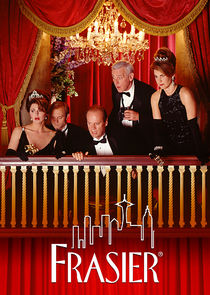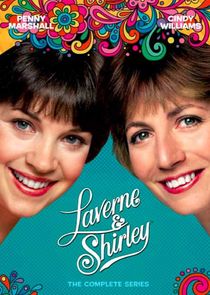Art Garfunkel is a singer and actor who rose to fame as half of the '60s folk-rock duo Simon & Garfunkel.
Arthur Ira Garfunkel (GAHR-fuhn-kuhl) was born in Queens, New York, to parents of Romanian Jewish descent. In sixth grade, Garfunkel met Paul Simon when they both appeared in their school's production of Alice in Wonderland (Garfunkel was the Cheshire Cat). As juniors at Forest Hills High School, the duo adopted stage names of Tom and Jerry, and they released a moderate-selling single entitled "Hey Schoolgirl." They also appeared on the televised dance show American Bandstand, sharing the bill with Jerry Lee Lewis. Their follow-up single was not successful, so they disbanded and went to college. Garfunkel attended Columbia University to study architecture (later obtaining a degree in art history) and performed occasionally as Artie Garr. Garfunkel and Simon reunited in 1962, and they began performing in Greenwich Village folk coffeehouses before being signed to CBS Records by Tom Wilson.
Their debut album, Wednesday Morning, 3 A.M., sold only a few copies until Wilson had the single "The Sounds of Silence" overdubbed with electric instruments, which transformed it into a huge hit. After years of commercial success, Garfunkel decided to pursue an acting career, and the duo disbanded again. They have reunited for several performances, and both perform and record as solo artists. The Music Simon and Garfunkel performed primarily between 1957 and 1970. After being signed to CBS Records by Wilson in 1964, they released their debut album, Wednesday Morning, 3 A.M., which was not a commercial success. The disappointed duo temporarily split, with Simon moving to Europe (and releasing his solo British album, The Paul Simon Songbook, in 1965), and Garfunkel pursuing a master's degree in mathematics from Columbia University. A year later, without their knowledge, Wilson used Bob Dylan's studio band to overdub "The Sounds of Silence" with electric guitar, bass, and drums, releasing it as a single and making it a number-one hit. Radio stations across the country began receiving requests for the song, and CBS decided to salvage the album.
Simon returned to the United States to regroup with Garfunkel, and the two became stars. Though neither of them initially approved of Wilson's "electrified" version of their music, it was that folk-rock style that made them famous. Early Works. The Wilson remixed single appeared on the duo's second album, The Sounds of Silence, which also featured material taken from The Paul Simon Songbook. A surprise success, the album contained the hits "Homeward Bound" and "I Am a Rock." Their next album, Parsley, Sage, Rosemary, and Thyme, contained such favorites as "A Hazy Shade of Winter," "At the Zoo," "The Fifty-ninth Street Bridge Song" ("Feelin' Groovy"), and "Scarborough Fair." The Graduate. Filmmaker Mike Nichols commissioned the duo to do some songs for the soundtrack of his 1967 film, The Graduate. The soundtrack was an instant hit, and in 1968 it knocked the Beatles' White Album off the top of the record charts. In 1969 the single "Mrs. Robinson" later won the first of several Grammy Awards for Simon and Garfunkel. Initially composed by Simon as a nostalgic salute to Americana, "Mrs. Robinson" began lyrically as "Mrs. Roosevelt." Nichols suggested the name change to relate it to his movie, and with that edge the duo ended up with a huge success. Their follow-up album, Bookends, became a number-one Billboard hit.
The themes on the album were more complex than previously released albums, and it also included an updated version of "Mrs. Robinson." Bridge over Troubled Water. At the height of their success, Simon and Garfunkel experienced pronounced personal differences. By 1969 Garfunkel was earnestly pursuing a film career, and he was given the role of Nately in Nichols's film adaptation of Joseph Heller's novel Catch-22 (1961). Simon had also been promised a part in the film, but it was ultimately cut. Garfunkel's filming time conflicted with studio recording time for the duo's next album, Bridge over Troubled Water, causing further tension in their relationship. The album, featuring eleven tracks, took two years to complete. Despite the strain between Simon and Garfunkel, the album was one of the best-selling of the entire 1970's, and itwonseveralGrammyAwards in 1971, including Album of the Year and Best Engineered Recording. The title track, featuring Garfunkel's unmistakable tenor, won Record of the Year and Song of the Year. That same year, they also won Best Contemporary Song and Best Arrangement Accompanying Vocalists. Other highlights from the album include "The Boxer," "Cecilia," and "El Condor Pasa." Despite their overwhelming success, the duo separated in 1970, stating that their intention was not to part permanently, but rather to take a break from each other. Garfunkel divided his time between acting and a small solo career, and the two have occasionally reunited, recording hits and performing for packed venues. They were inducted into the Rock and Roll Hall of Fame in 1990. Musical Legacy Influenced by the Everly Brothers and Bob Dylan, Garfunkel and his partner Simon sang songs with themes that appealed to teenagers and adults alike. Their duets married the elements of folk music (sometimes incorporating actual folk songs, such as the traditional English tune "Scarborough Fair") with rock music (drums, electric guitars, bass). That musical coupling, combined with the duo's close vocal harmonies, clean-cut images, and distinct academic backgrounds, made them unique among the folk-rock musicians of the day.






